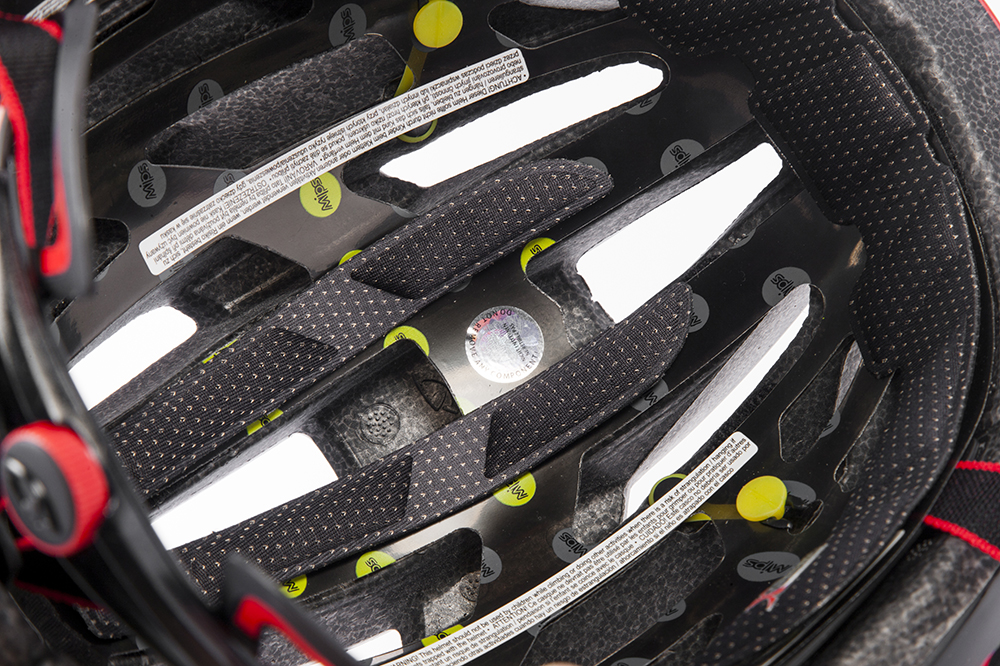Giro Cinder MIPS helmet review
The Giro Synthe is a hugely popular lid - but it's not cheap, which is where the Cinder and Ember helmets come in

A more affordable version of the Giro Synthe, the Giro Cinder MIPS helmet carries many of the performance benefits of its award winning sibling - with a few corners cut, and a resulting cash saving for the customer.
Whilst we're huge fans of the Synthe, we know that not every rider wants to fork out £250 for a lid - and the Cinder is an excellent compromise, which us why it's made its way into the Editor's Choice 2017 listings...
Billed as the budget version of the Giro Synthe, the Giro Cinder MIPS features many of the premium features of its stable mate, at a sniff of the cost. There's a women's version too, the Giro Ember - but the only difference here is in the aesthetics.
Both the Synthe and the Cinder cycling helmets are available with MIPS technology as an additional protective element. Basically, it’s a layer of plastic inside the helmet that helps reduce rotational impact of crashes and head knocks.
Giro has embraced the new technology in their helmet range. While our tester never actually used the helmet or MIPS in anger, we did feel comforted knowing the technology was there.
An affordable sibling to the Synthe
The Cinder comes in at £129.99 with MIPS, or £99.99 without - compared to the Synthe which maxes out at £249.99.
So, what’s the difference between the two? Aerodynamics, weight and breathability.
The Giro Synthe is considered the aero older sibling in the Giro helmet lineup. The Cinder - a little wider in body - weighs in at 234 grams in a size Medium, whilst the Cinder tips the scales at 290 grams.
The Synthe has made a name for itself in combining aerodynamics with effective ventilation, too - and the Cinder doesn't quite have the same edge.
However, one of the other USPs of the Synthe has always been its ability to provide an aero lid that looks stylish - and the Cinder MIPS is an excellent looking helmet with near universal appeal.
Despite its wide profile, it still manages to look sleek, compact and fast when worn. No doubt the speed implying red and black colourway tested here helps.
Not only that, but the Cinder MIPS proves comfortable across a wide range of testers. It features Giro’s own Roc Loc 5 retention dial, which allows you to minutely click in the correct fit for your head – making it a ‘skull hugging luxury’ according to Giro.

And hug it does - we discovered the Cinder to be a lid which could comfortably cradle our heads, sitting snug and close.
Never stuffy and quick to adjust
Giro has opted to use a Roc Loc 5 closure system, this is easily adjustable with one hand and allows for minute adjustments either way.
The retention dial does also allow the helmet to comfortably accommodate winter hats, too. We managed to squeeze both slimline skull caps and larger peaked merino hats under the helmet without coming close to the limits of its retention.
Despite not having the same size vents as the Giro Synthe, on most rides the Cinder MIPS never felt stuffy, even when wearing a hat. When it comes to long climbs in high temperatures, the difference can be felt - but for a lot of riders this isn't a daily occurrence.
With its snug fit, good retention system, and multiple colourways, coupled with a the Giro Cinder MIPS is well worth a try.

Thank you for reading 20 articles this month* Join now for unlimited access
Enjoy your first month for just £1 / $1 / €1
*Read 5 free articles per month without a subscription

Join now for unlimited access
Try first month for just £1 / $1 / €1
Get The Leadout Newsletter
The latest race content, interviews, features, reviews and expert buying guides, direct to your inbox!
-
 'I'll take a top 10, that's alright in the end' - Fred Wright finishes best of British at Paris-Roubaix
'I'll take a top 10, that's alright in the end' - Fred Wright finishes best of British at Paris-RoubaixBahrain-Victorious rider came back from a mechanical on the Arenberg to place ninth
By Adam Becket Published
-
 'This is the furthest ride I've actually ever done' - Matthew Brennan lights up Paris-Roubaix at 19 years old
'This is the furthest ride I've actually ever done' - Matthew Brennan lights up Paris-Roubaix at 19 years oldThe day's youngest rider reflects on 'killer' Monument debut
By Tom Davidson Published